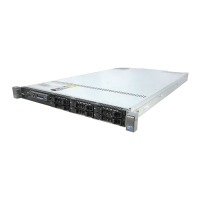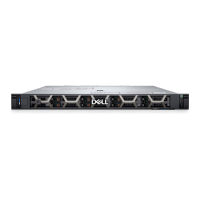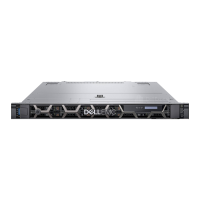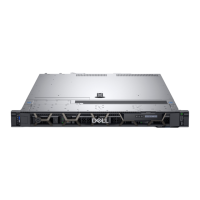Systems management iDRAC9 Enterprise provides system-level management that
monitors, reports, and controls power consumption at the
processor, memory and system level. OpenManage Power Center
delivers group power management at the rack, row, and data center
level for servers, power distribution units, and uninterruptible power
supplies.
Active power management
Intel Node Manager is an embedded technology that provides
individual system-level power reporting and power limiting
functionality. Dell EMC oers a complete power management
solution comprised of Intel Node Manager accessed through Dell
EMC iDRAC9 Enterprise and OpenManage Power Center that
allows policy-based management of power and thermals at the
individual system, rack, and data center level.
Hot spare reduces power consumption of redundant power
supplies.
Thermal control of fan speed optimizes the thermal settings for
your environment to reduce fan consumption and lower system
power consumption.
Idle power enables Dell EMC servers to run as eciently when idle
as when at full workload.
Thermal and Acoustics
The system's thermal management delivers high performance through optimized cooling of components at the lowest fan speeds across a
wide range of ambient temperatures from 10°C to 35°C (50°F to 95°F) and to extended ambient temperature ranges. These
optimizations result in lower fan power consumption for lower total system power and data center power consumption.
Power supply units
Energy Smart power supplies have intelligent features, such as the ability to dynamically optimize eciency while maintaining availability and
redundancy. Also featured are enhanced power-consumption reduction technologies, such as high-eciency power conversion and
advanced thermal-management techniques, and embedded power-management features including high-accuracy power monitoring.
The system supports two hot-swappable AC power supplies with 1 + 1 redundancy, auto-sensing and auto-switching capability.
Acoustical design
Dell EMC focuses on sound quality in addition to sound power level and sound pressure level. Sound quality describes how disturbing or
pleasing a sound is interpreted, and Dell EMC references a number of psychacoustical metrics and thresholds in delivering to it. Tone
prominence is one such metric. Sound power and sound pressure levels increase with greater populations or higher utilization, while sound
quality remains good even as the frequency content changes. A reference for comparison to sound pressure levels for familiar noise sources
is given in the following table. An extensive description of Dell EMC Enterprise acoustical design and metrics is available in the Dell
Enterprise Acoustics white paper.
Table 16. Acoustical reference points and output comparisons
Value measured at your ears Equivalent familiar noise experience
LpA, dBA, re 20 µPa Loudness, sones
90 80 Loud concert
75 39 Data center, vacuum cleaner, voice must be elevated
to be heard
28 Power, Thermal, and Acoustics
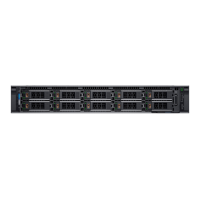
